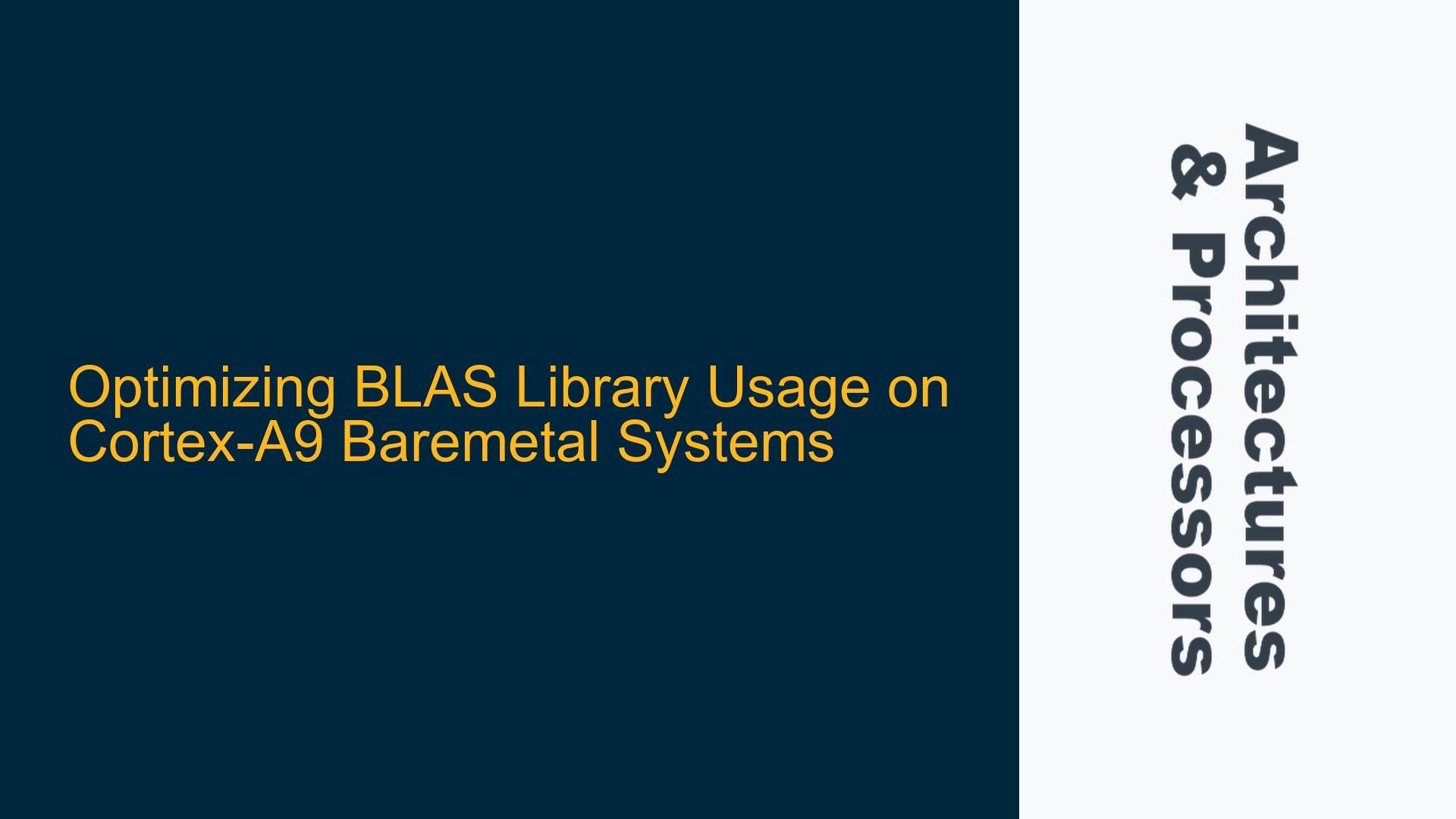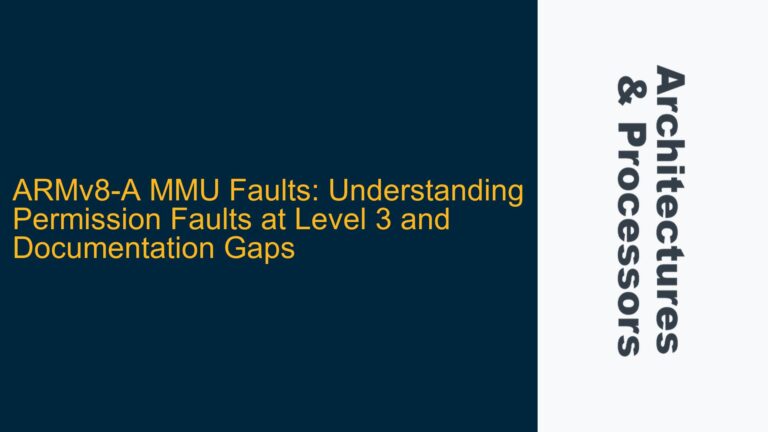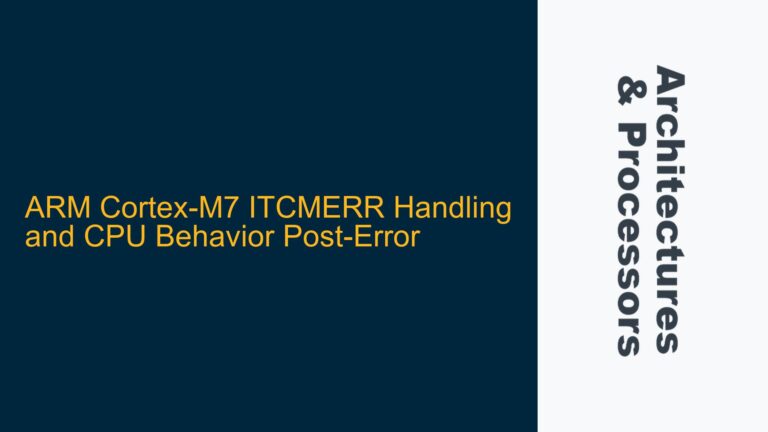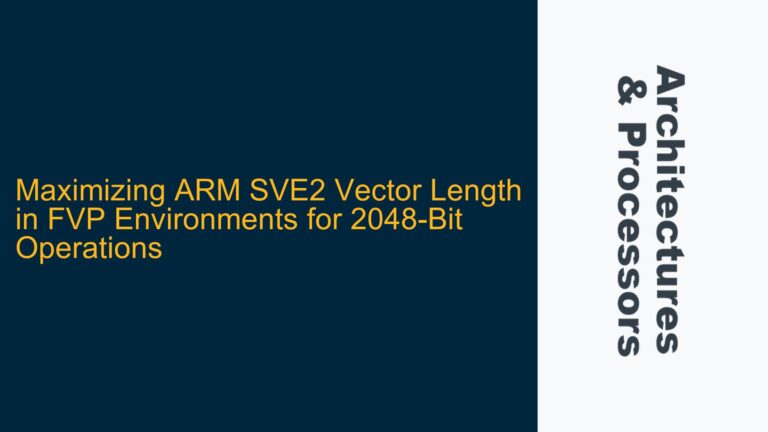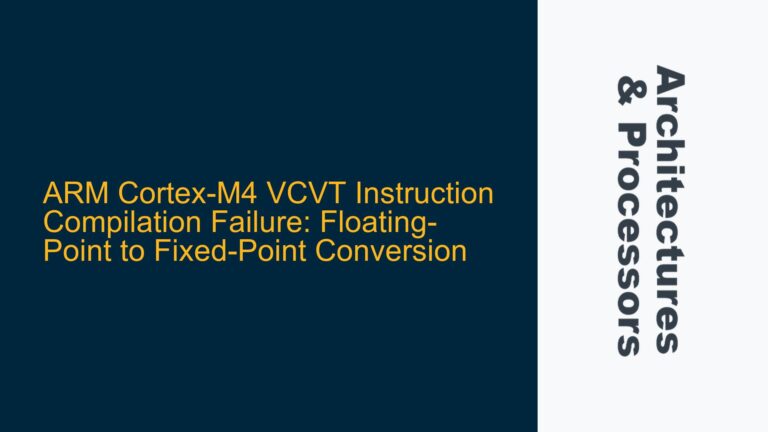BLAS Library Integration Challenges on Cortex-A9 Baremetal Systems
Integrating the Basic Linear Algebra Subprograms (BLAS) library into a baremetal system based on the ARM Cortex-A9 processor presents a unique set of challenges. The Cortex-A9, known for its dual-core configuration and advanced features like out-of-order execution and NEON SIMD capabilities, is a powerful processor for embedded applications. However, running a high-performance library like BLAS on a baremetal system—where there is no operating system to manage resources—requires careful consideration of several factors. These include memory management, cache coherency, floating-point unit (FPU) utilization, and compiler optimizations. The absence of an OS means that developers must manually handle these aspects, which can significantly impact the performance and stability of the BLAS library.
The BLAS library is designed to perform linear algebra operations efficiently, leveraging hardware capabilities such as vector processing and parallel execution. On a Cortex-A9, the NEON unit can accelerate these operations, but only if the library is properly configured to use it. Additionally, the lack of an OS means that dynamic memory allocation, threading, and interrupt handling must be managed explicitly. This can lead to issues such as memory fragmentation, cache incoherency, and suboptimal utilization of the dual-core architecture. Furthermore, the choice of compiler and its configuration plays a critical role in ensuring that the BLAS library is optimized for the Cortex-A9’s architecture.
Memory Management and Cache Coherency in Baremetal BLAS Implementation
One of the primary challenges in using the BLAS library on a Cortex-A9 baremetal system is managing memory and ensuring cache coherency. The Cortex-A9 features a memory management unit (MMU) and a cache hierarchy that includes L1 and L2 caches. In a baremetal environment, the MMU must be configured manually to map physical memory to virtual addresses, and the cache must be managed to prevent data corruption and ensure optimal performance.
The BLAS library often operates on large matrices and vectors, which can exceed the size of the L1 or L2 cache. Without proper cache management, performance can degrade significantly due to cache misses and thrashing. Additionally, the Cortex-A9’s cache coherency mechanism must be handled carefully, especially when using DMA (Direct Memory Access) or other hardware accelerators that access memory directly. Failure to maintain cache coherency can result in stale data being used in computations, leading to incorrect results.
To address these issues, developers must implement explicit cache maintenance operations, such as cache invalidation and cleaning, at appropriate points in the BLAS library’s execution. This ensures that data is correctly synchronized between the cache and main memory. Furthermore, the memory layout should be optimized to minimize cache conflicts and maximize data locality. Techniques such as aligning data structures to cache line boundaries and using non-cacheable memory for DMA buffers can help improve performance and reliability.
Leveraging NEON and FPU for BLAS Performance Optimization
The Cortex-A9’s NEON SIMD (Single Instruction, Multiple Data) unit and FPU (Floating-Point Unit) are critical for achieving high performance with the BLAS library. NEON can accelerate vector and matrix operations by processing multiple data elements in parallel, while the FPU ensures efficient handling of floating-point arithmetic. However, utilizing these hardware features in a baremetal environment requires careful configuration and optimization.
The BLAS library must be compiled with support for NEON and FPU instructions, which involves setting appropriate compiler flags and ensuring that the library’s code paths are optimized for these units. For example, the GCC Linaro compiler used in the Cortex-A9 system should be configured with flags such as -mfpu=neon and -mfloat-abi=hard to enable NEON and hardware floating-point support. Additionally, the library’s source code may need to be modified to use NEON intrinsics or assembly routines for critical operations.
Another consideration is the scheduling of NEON and FPU operations to avoid pipeline stalls and maximize throughput. This involves analyzing the BLAS library’s algorithms and restructuring them to take advantage of the Cortex-A9’s out-of-order execution capabilities. For example, loop unrolling and software pipelining can be used to reduce dependencies between instructions and improve instruction-level parallelism.
Compiler and Linker Configuration for Cortex-A9 BLAS Integration
The choice of compiler and its configuration is crucial for integrating the BLAS library into a Cortex-A9 baremetal system. The GCC Linaro compiler, commonly used for ARM targets, provides a range of options for optimizing code for the Cortex-A9 architecture. These include flags for enabling specific instruction sets, tuning for performance, and controlling code generation.
To achieve optimal performance, the compiler should be configured with flags such as -mcpu=cortex-a9, -mtune=cortex-a9, and -O3 to target the Cortex-A9 architecture and enable high-level optimizations. Additionally, the linker script must be customized to define the memory layout of the baremetal system, including the placement of the BLAS library’s code and data sections. This ensures that the library is loaded into memory regions with the appropriate attributes, such as cacheable or non-cacheable.
Another important aspect is the handling of floating-point operations. The Cortex-A9 supports both hardware and software floating-point arithmetic, and the choice between them can significantly impact performance. The compiler should be configured to use hardware floating-point operations (-mfloat-abi=hard) to leverage the FPU’s capabilities. However, this requires that the BLAS library is compatible with the chosen floating-point ABI (Application Binary Interface).
Debugging and Profiling BLAS Performance on Cortex-A9
Debugging and profiling are essential steps in optimizing the BLAS library’s performance on a Cortex-A9 baremetal system. Without an OS, traditional debugging tools may not be available, requiring the use of hardware debuggers and custom profiling techniques. These tools can help identify performance bottlenecks, such as excessive cache misses, inefficient use of NEON instructions, or suboptimal memory access patterns.
Hardware debuggers, such as JTAG probes, can be used to set breakpoints, inspect registers, and trace execution flow. This is particularly useful for diagnosing issues related to cache coherency and memory management. Additionally, performance counters available in the Cortex-A9 can be used to collect detailed metrics on cache usage, branch prediction, and instruction execution. These metrics can guide optimizations by highlighting areas where the BLAS library’s performance can be improved.
Custom profiling techniques, such as instrumenting the BLAS library with timing code, can also provide insights into its behavior. For example, measuring the time taken for specific operations, such as matrix multiplication or vector addition, can help identify inefficient algorithms or data structures. This information can then be used to refine the library’s implementation and improve its performance on the Cortex-A9.
Conclusion
Integrating the BLAS library into a Cortex-A9 baremetal system is a complex but achievable task. By addressing challenges related to memory management, cache coherency, NEON and FPU utilization, and compiler configuration, developers can unlock the full potential of the Cortex-A9’s architecture. Careful debugging and profiling are essential for identifying and resolving performance bottlenecks, ensuring that the BLAS library operates efficiently in a baremetal environment. With the right approach, the Cortex-A9 can deliver impressive performance for linear algebra operations, making it a viable platform for high-performance embedded applications.
